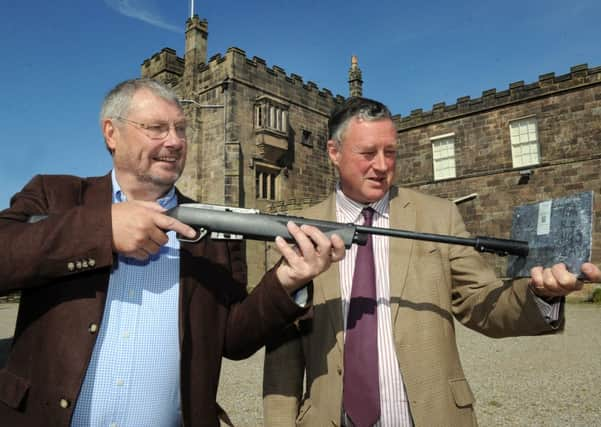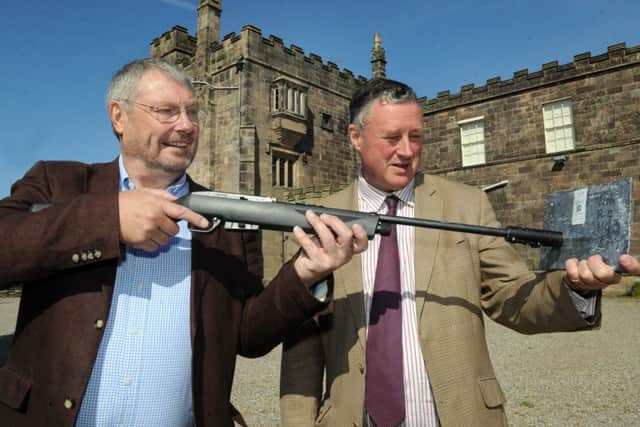Video: Ripley Castle’s game for a shot at tackling thieves


But Sir Thomas Ingilby, the owner of the stately home near Harrogate, has now installed a new hi-tech system which tags metal, allowing it to be traced even if it has been smelted which could prove to be be a major breakthrough in the fight against thieves.
Stealing metal is big businesses with estimates suggesting it costs the UK economy about £220m a year with raiders targeting churches and many of the nation’s best-loved historic buildings, stately homes and estates.
Advertisement
Hide AdAdvertisement
Hide AdSir Thomas, who runs the Stately Home Hotline, which shares security intelligence with more than 1,500 heritage properties across the country, said: “I receive reports of lead theft, sadly, from all over the country. When the price of lead goes up the quantity of theft increases.


“The number of incidents has been increasing over the last three years and its not just stately homes its churches as well. Not only is lead very expensive to replace, the damage that can be caused by theft can be incalculable.”
When metal thieves targeted a property on his North Yorkshire estate, they took so much lead that the ceiling collapsed – leaving not only a bill to replace what the offenders stole but also a large repair bill.
Now it is hoped the new system, developed with the help of ballistics experts, will make the stolen metal worthless for the thieves and scrap merchants who are willing to trade in stolen metal.
Advertisement
Hide AdAdvertisement
Hide AdTrace-in-Metal, which has been designed by a former West Yorkshire Police detective, uses a gun to fire thousands of microdots into metal sheets “marking” them with a unique identifying code.
As well as being impregnated into the metal, the dots – which are almost invisible to the naked eye – are also painted on to each sheet using an all-weather lacquer that shows up under ultra-violet light.
Those behind the project say even the smelting process cannot destroy the nickel dots and their unique tags.
Former detective inspector John Minary, who lives in York and is now a director of Trace-in-Metal , claimed that the system would make the metal worthless because it could be traced and shown to be stolen.
Advertisement
Hide AdAdvertisement
Hide AdIn turn, he stressed it could also be used to expose rogue dealers trading in stolen goods while it would show legitimate suppliers exactly what they are buying.
He said: “Our service will help reduce the number of outlets where stolen metal can be sold.”
Only last week Sir Thomas received a report through the hotline of men seen acting suspiciously at a property in the West Midlands, who were asking which parts of the building were lead.
He said that stolen items are often difficult to replace as they are historic or it can cost vast sums to carry out repairs because stately homes and heritage buildings tend to be high and require scaffolding to allow workmen to safely make repairs.
Advertisement
Hide AdAdvertisement
Hide AdSir Thomas said: “Often the insurance will not cover the costs of repairs and replacement and the owners are left badly out of pocket.
“Trace-in-Metal is a very clever answer to an old problem and one I’m sure that will be looked at seriously by the owners of historic buildings up and down the country.”
Comment: Page 12.